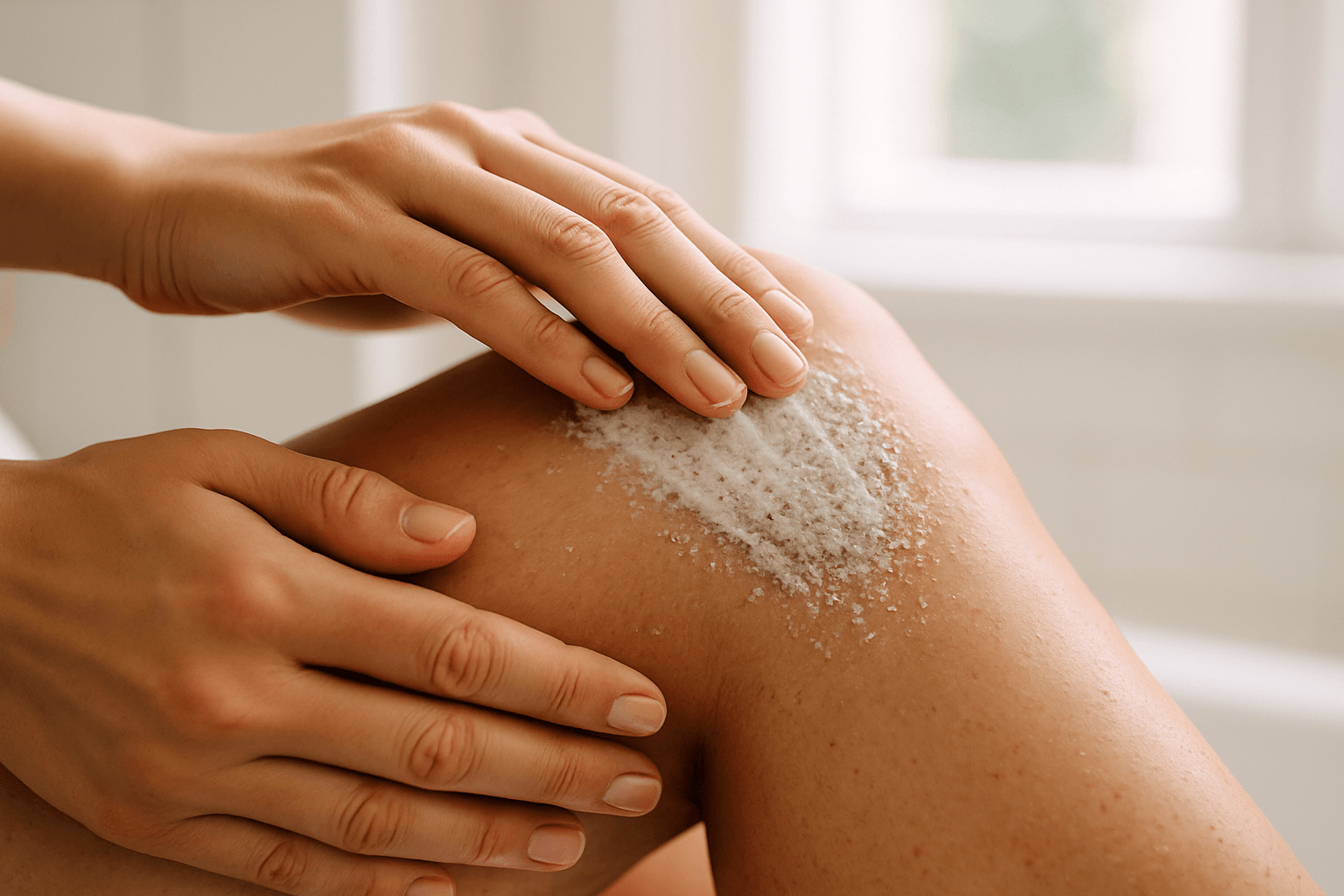“Strawberry legs” is a common term for the dotted or pitted appearance on legs resembling the skin of a strawberry. These dark spots are typically the result of clogged hair follicles or pores. While generally harmless, they can be a cosmetic concern. Here’s how to get rid of strawberry legs, according to dermatologists.
Understanding Strawberry Legs
What are Strawberry Legs?
Strawberry legs, also known as strawberry skin, is a cosmetic condition characterized by small dark spots or visible dots on the legs. These spots can be red, brown, or black, resembling strawberry seeds. They occur when hair follicles or pores become clogged with sebum, dead skin cells, dirt, or bacteria.
Common Causes
Several factors can contribute to strawberry legs:
- Shaving: Improper shaving with old or dull razors, or without shaving cream, can cause razor burn, folliculitis, and ingrown hairs. The skin around the follicle may also darken due to irritation.
- Clogged Pores: Pores can become clogged with bacteria, dead skin, oil, and dirt. When exposed after shaving or waxing, the oil oxidizes, turning darker and creating the “strawberry legs” effect.
- Folliculitis: This condition involves inflammation and infection of hair follicles, often caused by shaving, waxing, or tight clothing.
- Keratosis Pilaris: This common skin condition appears as small, rough bumps, often on the thighs, due to dead skin cells and keratin clogging hair follicles.
- Dry Skin: Dehydrated skin is more prone to irritation, razor nicks, and infections, increasing the likelihood of developing strawberry legs.
Effective At-Home Treatments
Exfoliation
Regular exfoliation is key to preventing and treating strawberry legs.
- Physical Exfoliation: Use a clean washcloth, loofah, dry brush, or exfoliating scrub to gently remove dead skin cells. Use gentle motions to avoid irritation.
- Chemical Exfoliation: Products containing alpha-hydroxy acids (AHAs), beta-hydroxy acids (BHAs) like salicylic acid, or glycolic acid can dissolve dead skin cells. These should be used carefully to avoid irritation, and it is important to wear sunscreen when using these products.
Proper Shaving Techniques
Correct shaving practices can minimize the occurrence of strawberry legs:
- Use a Sharp Razor: A sharp, new razor prevents razor burn and provides a closer shave. Replace disposable razors frequently.
- Moisturizing Shaving Cream: Always use a moisturizing shaving cream or gel to lubricate the skin and soften the hair. Some dermatologists recommend using hair conditioner as an alternative.
- Shave in the Right Direction: Shave in the direction of hair growth to reduce irritation. Avoid stretching the skin tight while shaving.
- Warm Water: Soak legs in warm water before shaving to open pores.
- Pat Dry: After shaving, pat the skin dry instead of rubbing to prevent irritation.
Moisturize Regularly
Keeping skin moisturized is crucial for preventing and improving the appearance of strawberry legs.
- Daily Moisturizer: Apply a high-quality moisturizer daily, especially after showering and hair removal.
- Ingredients to Look For: Choose moisturizers containing hyaluronic acid, ceramides, shea butter, or soothing ingredients like colloidal oatmeal.
- Avoid Irritants: Select products free of fragrances, dyes, and preservatives to prevent further irritation.
- Consider using non-comedogenic moisturizers like jojoba oil.
Alternative Hair Removal Methods
Consider alternative hair removal methods to reduce irritation and prevent strawberry legs:
- Waxing: Removes hair from the root and exfoliates the skin, potentially leading to softer, thinner hair regrowth over time.
- Epilators: These devices remove hair, and some find they prevent strawberry legs.
- Laser Hair Removal: A more permanent solution that targets hair at the root, reducing hair growth and minimizing the appearance of strawberry legs.
When to Seek Professional Treatment
Persistent Symptoms
If home remedies are ineffective, consult a dermatologist for professional treatment.
Medical Therapies
A dermatologist may recommend the following:
- Chemical Exfoliants: Prescription-strength chemical exfoliants to remove dead skin cells.
- Topical Medications: Antibiotics or corticosteroids for bacterial or fungal infections.
- Laser Therapy: Laser hair removal can provide a long-term solution by targeting and destroying hair follicles.
- Electrolysis: This method uses low levels of electricity to target and destroy hair follicles, preventing ingrown hairs.
- Chemical Peels: These remove dead skin cells and surface debris for cleaner pores.
Underlying Conditions
Strawberry legs may sometimes be related to underlying skin conditions that require medical treatment.
Lifestyle Adjustments and Prevention
- Avoid Hot Water: Use warm water instead of hot water when showering to prevent drying out the skin.
- Stay Hydrated: Drink plenty of water to keep skin hydrated.
- Avoid Tight Clothing: Wearing tight clothes can sometimes trigger strawberry legs.
- Keep Skin Clean: Regularly cleanse the skin with antibacterial cleansers to limit bacteria.
- Use a Humidifier: A humidifier can help keep the air moist, preventing dry skin.
By following these dermatologist-approved tips, you can effectively manage and prevent strawberry legs, achieving smoother, clearer skin.

